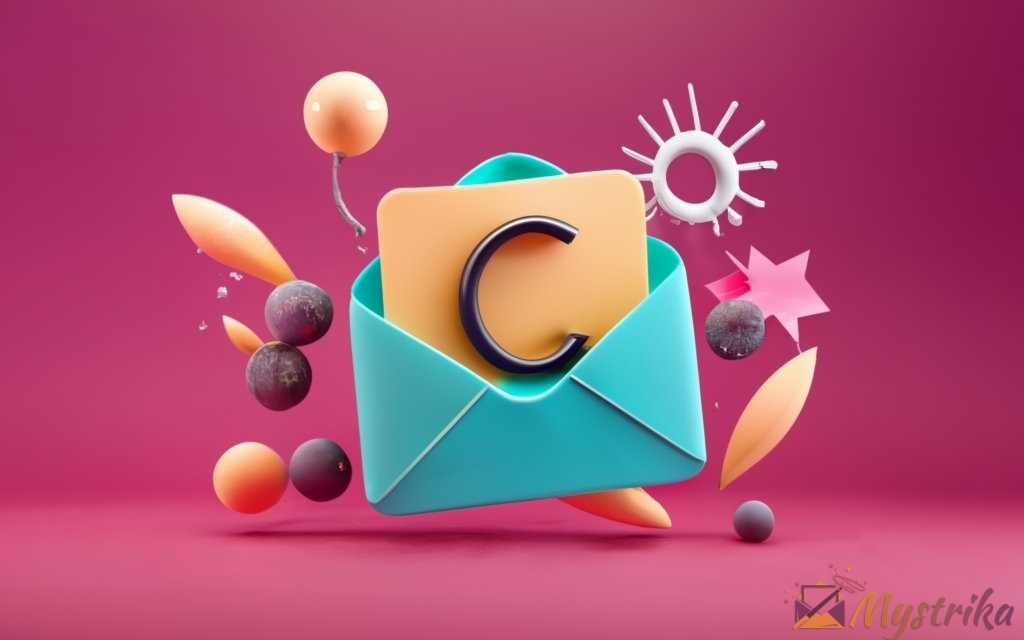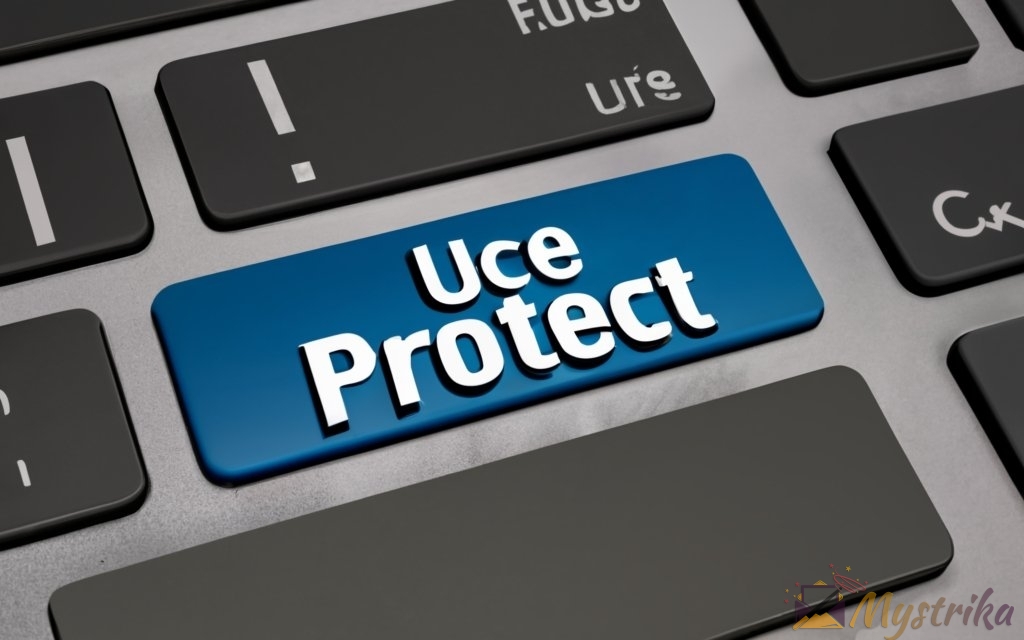Uh oh, you just got slapped with the notorious UCEPROTECTL2 blacklist – now what? Don’t panic!
This comprehensive guide will walk you through everything you need to know about resolving and avoiding issues with this infamous email blacklist. We’ll cover what landed you there, how to seek removal, whether to pay up, and most importantly – tips to make sure you never end up on UCEPROTECTL2 again.
Arm yourself with knowledge and take back control of your email deliverability. The darkness shall not prevail!
What is the UCEPROTECTL2 Blacklist?
If you’ve ever received one of those ominous-looking emails informing you that your IP address has been added to something called the “UCEPROTECTL2 blacklist”, it’s understandable to feel a wave of anxiety wash over you.
Getting blacklisted can definitely be scary – it conjures up visions of your emails vanishing into spam folders, never to be seen again. However, when it comes to UCEPROTECTL2 specifically, things may not be quite as dire as they seem.
Let’s break down exactly what the UCEPROTECTL2 blacklist is, who and what it targets, and how you might have ended up on its radar in the first place.
Overview of UCEPROTECT Levels and Blacklists
UCEPROTECT is an anti-spam organization that maintains several different blacklists categorized into various “threat levels”:
- UCEPROTECTL1: Contains individual IP addresses known to send spam
- UCEPROTECTL2: Focuses on larger IP ranges and providers with reputations for allowing spam
- UCEPROTECTL3: Blacklists entire subnets or regions for pervasive spam problems
As you can see, UCEPROTECTL2 is the middle ground – more serious than listing just single IPs, but less broad than blocking huge swaths of addresses at once.
UCEPROTECTL2 earned its somewhat ominous reputation by playing hardball with larger hosting providers and ISPs. If UCEPROTECT determines that a provider isn’t doing enough to stop spam from their network, the entire provider can end up blacklisted across the board as a punitive measure.
This understandably rattled a lot of businesses who suddenly found their own IP addresses blacklisted through no direct fault of their own – simply for being customers of a provider that failed to meet UCEPROTECT’s standards.
IP Ranges and Providers Targeted by UCEPROTECTL2
UCEPROTECTL2 casts a wider net than just individual IP addresses.
It focuses on:
- Shared web hosting IP ranges: Many smaller sites share space on their web host’s servers, meaning if one site sends spam, everyone on that server gets blacklisted together.
- Consumer IP address ranges: Likewise, if a residential ISP fails to halt spam from consumer connections, their entire consumer IP range can be blacklisted.
- Email provider IP ranges: Email hosts, especially budget email providers with less stringent policies, are common UCEPROTECTL2 targets.
- Spammer-friendly networks: Hosting companies and networks known for tolerating or ignoring spam/abuse issues also frequently find themselves in UCEPROTECT’s crosshairs.
As you can see, legitimate businesses frequently get caught in the collateral damage of such broad-stroke blacklisting policies. Just because Spammer Dave shares your website’s IP address doesn’t mean your business should be treated like an abusive spam operation.
But that’s exactly what can happen when UCEPROTECTL2 goes into blanket blacklist mode.
Spam Traps and Other Detection Methods
UCEPROTECT relies on an array of tools to identify and blacklist networks which fail to meet its spam standards, including:
- Spam traps: Also known as honeypots, spam traps use enticing fake email addresses and inboxes to lure in and detect spammers.
- Spam reports: UCEPROTECT likely factors in spam reports and abuse complaints sent to ISPs and networks. Too many complaints can trigger increased scrutiny.
- Behavioral analysis: Multi-factor scoring systems analyze traffic patterns to identify spammers based on delivery volume, timing patterns, etc.
- Blacklist sharing: Compiling and corroborating data from other blacklists gives additional signals used to detect spammy networks.
The sheer breadth of these detection methods, combined with UCEPROTECT’s aggressive gating policies towards networks, leads to regular false positives and excessive collateral damage.
Not every website or business using a shared hosting provider is actually sending spam themselves. But they suffer the consequences all the same when their small host or provider gets slapped with a UCEPROTECTL2 blacklist.
Next will explore common ways innocent users can get unfairly sucked into this blacklist vortex, and how you can avoid it.

How Do You End Up on the UCEPROTECTL2 Blacklist?
So you woke up, checked your inbox, and discovered an alarming email informing you that your IP address has been added to the dreaded UCEPROTECTL2 blacklist. How the heck did that happen?!
Before spiraling into full-on panic mode, take a deep breath – there are actually a variety of ways you could have wound up on this blacklist through little or no direct fault of your own.
Let’s break down the most common avenues leading to a UCEPROTECTL2 IP address blacklist, both within and beyond your control.
Compromised Accounts or Mail Servers
If your website or mail server gets hacked or compromised, it’s not uncommon for the attacker to use your assets to send spam or phishing emails without your knowledge.
Since as far as UCEPROTECT can see, the spam is coming from your IP address, you’re the one who gets blacklisted as the “source” – even though you’re actually the victim in this scenario!
Some common scenarios that can lead to a blacklist:
- Weak passwords: If you use weak or reused passwords for admin accounts, hackers can easily take over your domain and servers. Always use strong, unique passwords and enable two-factor authentication wherever possible.
- Outdated software and platforms: Old software and platforms frequently contain vulnerabilities that may allow your server to be compromised if left unpatched. Keep everything updated!
- Infected websites/scripts: If your site is infected with malware, it can be leveraged to send spam emails, triggering blacklists. Scan regularly for malware and protect your site.
- Phishing/spoofing: Hackers can spoof the “From:” address in emails by compromising accounts or servers, making it seem like the spam is coming from your domain.
Being the unwitting victim of hacking or spoofing is an unfortunate but common way businesses end up unfairly blacklisted. Thankfully it’s not a reflection on your own email practices – but you’ll have to take steps to secure and clean up your assets before seeking blacklist removal.
Unsecured Mailing Scripts and Misconfigurations
If you use any scripts or apps to send email from your website, vulnerabilities or misconfigurations in those tools can also cause spam and blacklisting issues.
For example:
- An unsecured contact form that doesn’t use CAPTCHA or rate limiting can easily be abused to spam comments or submissions from your domain.
- Auto-responders and mailing list apps must be set up properly, with opt-in requirements, to avoid accidentally sending spam.
- Transactional email apps need to be kept secure and have proper unsubscribe links to avoid complaints.
Any app or script tied to your domain that sends email on your behalf could trigger a blacklist if abused or misconfigured. It’s not always direct negligence on your part either – a subtle vulnerability you overlooked, or a third party app that wasn’t properly vetted can be enough.
Sharing an IP Address Range with a Spammer
Remember, UCEPROTECTL2 focuses heavily on blacklisting entire IP ranges – even if just one IP within that range is sending spam. So if you share space with a spammer, you’re going down too.
Some examples where this frequently happens:
- Shared web hosting: Hundreds of websites may share an IP address range from their budget web hosting provider. One bad apple site sending spam ruins it for everyone.
- Email hosting: Likewise, shared email servers host many domains together – if one tenant sends spam, everyone on that server gets blacklisted together.
- ISP IP ranges: Similarly, consumer ISP IP ranges can blanket-blacklist all their residential customers for issues from just a few.
While there are certainly instances where a whole provider deserves to be blocked for systematic abuse, it’s unfair that this also impacts innocent customers sharing those IP ranges who are just trying to responsibly send normal business or transactional emails. But that’s the nature of UCEPROTECTL2’s broad-brush tactics.
Purchased Email Lists, Spam and Abuse Complaints
If you bought an email list to target for outreach, or have been flagged for spam by recipients of your existing lists, you may risk triggering a UCEPROTECT blacklist for sending unsolicited email at volume.
Some specific scenarios include:
- Purchased lists: Using purchased lists instead of opt-in / confirmed leads increases spam risk. UCEPROTECT actively traps and detects purchased lists.
- Spam button usage: If enough recipients click “spam” or “report” on your emails, ISPs and UCEPROTECT will take notice eventually.
- Abuse reports: Recipients can file abuse reports with providers regarding your unsolicited outreach emails. Too many complaints put you on the radar.
- Mailing misuse: Improperly emailing purchased lists you never confirmed opt-in for is probably the most clear-cut way to end up blacklisted.
While this category is the closest to actual “spamming” that UCEPROTECT aims to catch, sometimes context matters – like form opt-ins you mistakenly relied on, or a purchased list you prescreened but still triggered complaints. Nonetheless, be wary of putting yourself in such situations to begin with.
Spam Traps and Poor Reputation Ranges
As mentioned earlier, UCEPROTECT operates extensive spam traps – fake email addresses and domains designed to lure and detect spammers.
If you purchased a list that contained fake spam trap addresses, or if random outreach emails matched typoed versions of those addresses, you may end up accidentally caught in this trap.
Similarly, if the reputation of your shared IP range is already poor, minimal activity could push you over the blacklist threshold. So it’s possible to get sucked into a blacklist despite doing nothing directly wrong yourself.
Sending or Forwarding Emails with Malware
Another way your IP can trigger a UCEPROTECT blacklist with minimal direct action on your part is by accidentally forwarding or otherwise re-sending an infected email.
For example, if a user forwards you an email with malicious links or attachments, then you in turn forward that same email to colleagues or a mailing list, your IP becomes associated with spreading malware – even if you had no ill intent.
UCEPROTECT has no insight into what’s going through your mind or email chain when you pass along such messages. All they see is malware being disseminated from your IP, which meets their criteria for blacklisting.
False Positives and Overly Broad Detection
Finally, given the wide range of detection techniques and overly blunt enforcement approach taken by UCEPROTECTL2, false positives frequently ensue:
- Websites can get caught sharing hosting space and resources with actual spammers.
- Residential customers suffer for issues caused by other negligent customers of their ISP.
- Businesses and mailing lists trigger technical spam trap detections and receive complaints for emails recipients personally deem unwanted.
- Networks get tarred by the actions of a small subset of users.
The breadth of the enforcement frequently fails to account for context and intent. Not every filter hit or complaint necessarily means you are actively spamming – but UCEPROTECTL2 treats most triggers as de facto proof of unlawful bulk mailing.
So in short, ending up on the UCEPROTECTL2 blacklist often happens not necessarily through any direct spamming on your part, but due to technicalities and collateral damage from sharing resources, servers and IP ranges with those who do. Be mindful of these avenues of reputation contamination when considering your own domain and deliverability strategies.

What is the Impact of Being on the UCEPROTECTL2 Blacklist?
So you’ve ended up on the dreaded UCEPROTECTL2 blacklist. Now what? Will your emails vanish into spam folders across the internet, never to be seen again?
Not necessarily. The impact of being blacklisted by UCEPROTECTL2 depends heavily on who your email recipients are, and which networks or providers they use. Let’s break down the real-world effects.
Limited Effect on Deliverability to Major Providers
The major inbox providers – think Gmail, Outlook, Yahoo, etc. – generally do not use or enforce the UCEPROTECTL2 blacklist themselves.
Instead, these large networks rely primarily on their own internal spam detection and reputation filtering systems. They analyze factors like sender history, complaint rates, engagement metrics, and more.
So if you have an established sending history with tons of clicks and opens, positive engagement from recipients, and low complaint rates, a random UCEPROTECTL2 listing is unlikely to suddenly tank your deliverability to these major inbox providers.
Getting blacklisted by niche providers perhaps nobody has heard of usually won’t directly hurt your real-world results.
Email Blocking by Recipients Using the Blacklist
The main impact of landing on the UCEPROTECTL2 blacklist arises for lesser-known networks, smaller ISPs, and niche inboxes that do actively implement it for filtering.
If a material subset of your target email recipient base uses smaller providers or inboxes that leverage UCEPROTECTL2 for spam detection, you could indeed see deliverability issues and blocking of your emails to those recipients.
So the blacklist does carry some weight – but primarily only on certain second-tier networks. Most major consumer and business inboxes will likely remain unaffected if you have an established sending reputation with them already.
Reputation Damage and Deliverability Issues
Even though major inbox providers may not directly leverage the UCEPROTECTL2 blacklist, getting added to any public blacklist does risk indirect reputation damage if word gets out and recipients lose trust.
And if smaller networks you depend on for a segment of your targets do implement UCEPROTECTL2 filtering, your deliverability to those contacts could be severely impacted.
So a UCEPROTECTL2 listing should not be dismissed or ignored. It can indirectly tank your sending reputation over time, and directly block emails to subsets of your recipients. The damage just tends to be more contained compared to larger blacklists.
Collateral Impacts on Innocent Users and Shared Ranges
Because UCEPROTECTL2 often blacklists entirely shared hosting ranges where just one site may be sending spam, the collateral damage frequently ensnares innocent bystanders.
Likewise for residential ISP ranges – every household suffers blocked emails if their provider fails to stop spam from a small number of naughty customers.
And of course smaller businesses can get sucked into blacklists simply for picking the wrong budget hosting provider that had issues.
So the overly broad brush of UCEPROTECTL2 ends up unfairly impacting legitimate users who weren’t actually spamming at all. Just another reason to take their methods with a grain of salt.
In nutshell, a UCEPROTECTL2 blacklist, while certainly not ideal, is not necessarily the end of the world for your email deliverability, depending on your target recipients and current sending reputation.

How to Check your UCEPROTECTL2 Blacklist Status
So you suspect you may have ended up on the UCEPROTECTL2 blacklist, either directly or indirectly due to a shared host or something else beyond your control. But how can you check for sure?
There are a variety of tools and methods to detect if your IP address or domain is listed on the UCEPROTECTL2 blacklist. Let’s explore some options.
Using Online IP Blacklist Checking Tools
The easiest and quickest way to check your UCEPROTECTL2 status is by using online IP blacklist checking tools.
These tools allow you to enter an IP address or domain name, and cross-reference multiple blacklists to see if there are any current listings. Many are completely free to use.
Some popular options include:
Simply enter your IP address or domain name, and scan the results for any hits on the UCEPROTECTL2 blacklist specifically. Most tools will clearly highlight any blacklistings detected for easy identification.
Mystrika Has a Blacklist Check Tool
In addition to the general IP blacklist checking tools above, email warmup and deliverability services like Mystrika often provide their own blacklist monitoring tools you can use for free even without an account.
These deliverability-focused blacklist checks will scan all the niche email blacklists as well, providing a thorough overview of any reputation issues.
Monitoring Listings Over Time
Rather than only doing periodic one-off checks whenever issues pop up, it’s wise to proactively monitor your blacklisting status on an ongoing basis.
Many of the IP and domain blacklist check tools above offer options to schedule regular automated checks, and will notify you immediately via email if any new blacklistings are detected.
Setting up these notifications can act as an early warning system, allowing you to address any problems before they spiral out of control.
The Importance of Ongoing Reputation Monitoring
Email blacklists and inbound spam filters at major providers like Gmail are constantly evolving. Even if you aren’t specifically blacklisted today, you could end up on one tomorrow without proper controls.
This is why regularly monitoring your sending reputation and blacklist status is so crucial – it allows you to identify any deliverability issues early while they are still minor and easily addressed.
Consider setting up proactive reputation monitoring with tools like these:
- Google Postmaster Tools: Monitors Gmail spam filter status
- Mail-Tester: Analyzes reputation and spamminess
- Mystrika: Free email blacklist monitoring
The earlier you can detect deliverability and reputation problems, the quicker you can take corrective action and avoid major issues down the road. So keep a close eye!
Let me know if you need any clarification or have additional suggestions for improving this section on monitoring your UCEPROTECTL2 blacklist status and overall sending reputation over time.

How to Remove an IP Address from the UCEPROTECTL2 Blacklist
So you’ve wound up on the notorious UCEPROTECTL2 blacklist, and emails to your recipients are either blocked or at risk. What now? How do you get yourself removed from this blacklist?
Unfortunately, there are no easy shortcuts or instant removals when it comes to cleansing your IP address of UCEPROTECTL2’s taint. But a few deliberate steps can get you delisted.
Automatic Removal Process and Timing
The UCEPROTECTL2 blacklist operates on a purely automated addition and removal process driven by their detection systems.
Per their published policies, if your IP address lands on the UCEPROTECTL2 blacklist, it will be automatically removed after 7 days of no repeat offenses or spam activity from that IP being detected by their systems.
In other words, you need 7 days of “good behavior” with a clean record for their algorithms to eventually purge your listing.
Note that this waiting period starts after the last spam was sent. If sporadic spam continues from your IP, the countdown resets each time and your wait to get delisted will prolong. Only 7 days of confirmed inactivity will clear their threshold.
Lack of Ability to Request Express Removal
UCEPROTECTL2 does not offer any way to manually request or expedite removal from their blacklist ahead of the usual waiting period.
This can be frustrating, as it essentially forces you to sit patiently on the sidelines for 7+ days while being blocked or filtered for emails sent long ago.
Nonetheless, manual delisting is unavailable – you must wait out their automatic timeout.
Express Removal (Whitelisting) is Possible if You Pay UCEPROTECT for Membership
While you cannot specifically request removal from the UCEPROTECTL2 blacklist itself, it is technically possible to get your IP address whitelisted or excluded from their entire filtering system by signing up for a paid UCEPROTECT membership package.
However, this involves paying a monthly or annual membership fee simply for the right to send normal business email without unfair blacklisting, which understandably rubs many users the wrong way.
Most deliverability experts recommend against paying for removal from any blacklist, as it fails to address the root cause of why you were listed, and problems may recur soon after removal anyway if the underlying issue remains.
Avoiding Re-Listing After Removal
To avoid winding right back up on the UCEPROTECTL2 blacklist after finally being removed, be sure to:
- Resolve whatever triggered the original blacklisting (compromised account, shared IP issues, etc)
- Warm up your IP reputation gradually using an email warmup service before sending at volume
- Closely monitor blacklist status and inbox placement for early warning signs
- Maintain strict compliance with anti-spam laws and best practice sending
With discipline and vigilance, you can break the negative cycle of blacklist removals followed by repeat listings once your IP address gets purged automatically.

How to Avoid Ending Up on the UCEPROTECTL2 Blacklist
Once burned by the UCEPROTECTL2 blacklist, most senders want to avoid ever ending up on it again. So what proactive steps can you take to maintain positive deliverability and avoid further issues with aggressive blacklisters?
Let’s explore some best practices to keep your sender reputation pristine and steer clear of problematic blacklists like UCEPROTECTL2.
Warming Up New IP Addresses with an Email Service like Mystrika
If you start sending emails suddenly from a brand new IP address without any history or reputation, you greatly raise the risk of triggering spam filters and blacklists.
That’s why properly “warming up” and establishing the reputation of any new IPs or domains before you start actively sending emails is so crucial.
Specialized email warmup services like Mystrika can facilitate this by:
- Gradually building your IP’s positive sending history
- Generating real engaged email activity from their tester inboxes
- Closely monitoring inbox placement and reputation
This warm up stage essentially trains major email providers that your IP is not a spammer before you begin sending emails to your own customers. Done right, it helps avoid early spam foldering and blacklisting landmines.
Maintaining Strong Inbox Placement Metrics
As covered earlier, the major inbox providers like Gmail and Outlook generally do not use UCEPROTECTL2 for filtering. Instead they rely on internal metrics and signals.
Two of the most important positive signals are:
- High email engagement (opens, clicks): Recipients opening and clicking your emails tells providers your messages are wanted.
- Low spam complaints: If few users mark your mail as spam or unsubscribe, you seem trustworthy.
So maintaining strong inbox placement and high engagement on emails sent to core recipients helps ensure major providers keep delivering your mail, regardless of random niche blacklists.
Open, Clicks and Replies Send Positive Signals to Email Service Providers
Metrics that matter most to inbox providers are open rates, click rates, and reply rates. Why?
- Opens show recipients are reading your emails
- Clicks indicate your content is relevant and useful
- Replies demonstrate recipients deem you worthy of responding
Maximize these signals through well-crafted emails and content specifically geared to your audience.
Email Warmup Tools Like Mystrika Generate Human-Like Engagement for Your Emails
Manual engagement efforts can only go so far. That’s where email warmup and simulation tools like Mystrika come in.
By automatically simulating realistic human-like opener and clicker behavior on your test warmup emails, Mystrika directly builds your key inbox provider engagement metrics for you.
This trains providers your emails deserve inbox placement right out the gate.
Email Address List Hygiene and Permission
If you purchased email lists without proper opt-in consent, or haven’t scrubbed your lists to remove stale addresses, low engagement, and spam traps, you’re asking for blacklist trouble.
Regularly prune your lists to keep only high quality engaged contacts. Never email purchased lists without explicit opt-in permission either.
And always honor unsubscribe requests immediately.
Building Quality Email Lists
High quality email lists come from:
- Website opt-in forms
- Social and print ad conversions
- Webinar and content gate subscriber signup
- Retargeting users who previously engaged
- Direct inbound inquiries and leads
These sources demonstrate clear initial interest justifying your emails. Purchased lists without context lack that justification.
Proper Email Sending Volume and Frequency
When establishing a new IP, you must gradually build up your email volume and avoid massive bursts of emails that look like spam.
Sending thousands of emails suddenly from a new domain or IP is likely to trigger issues. Build volume slowly over several weeks.
And limit general broadcast frequency to 2-3 touch points per week maximum, to avoid seeming overly aggressive.
Gradual Volume Ramping Using Warmup Tools Like Mystrika
An intelligent email warmup service like Mystrika will automatically ramp up your email volume in a controlled manner based on key engagement and reputation signals.
Rather than using arbitrary send intervals, your warmup schedule is optimized based on direct response metrics from inbox providers to your test emails. This minimizes spam risks.
Here’s an example volume ramping schedule that an advanced email warmup tool like Mystrika would implement based on your domain and IP’s direct engagement analytics:
- Week 1: starting with 2 emails per day, going upto 25 emails per day
- Week 2: 50 emails per day
- and so on
The steady measured ramping allows your IP to build volume and trust simultaneously, avoiding sudden spikes that appear like spam.
Avoiding Risky Content, Links, and Spam Keywords
Even if sending volume and engagement metrics seem solid, risky content like:
- Dangerous links
- Malware attachments
- Excessive spam keywords
- Untrustworthy content
Can undo your good inbox placement and trigger issues like blacklisting. Keep your email content clean.
Ongoing Deliverability Testing and Monitoring
Don’t just set things up and assume your emails will continue reaching the inbox indefinitely. Routinely test and monitor key metrics using tools like:
Google Postmaster Tools for IP and Domain Monitoring
Google Postmaster Tools reveals exactly how Gmail views your current IP and domain reputation, bringing transparency to their spam filtering. Don’t email blind – monitor your stats.
Monitoring Blacklists and Proactively Handling Issues
Check blacklists regularly for early warning signs of degrading reputation. If detected early, issues can be addressed before they spiral.
Proactive monitoring and rapid response prevents small hiccups from turning into catastrophes.
In short, a combination of reputation warming, sender discipline, inbox monitoring, and quality engagement building are your keys to avoiding problematic blacklists like UCEPROTECTL2 altogether.

Should You Pay UCEPROTECT for Removal?
As outlined earlier, UCEPROTECTL2 does not allow manual removal requests. Your only option is waiting out their automatic delisting after 7 days.
However, you can pay UCEPROTECT for a premium “Membership” that exempts your IP address from their blacklists and filters entirely. Should you pay up? Let’s weigh the pros and cons.
Controversy Around Paid Listing Removal
In general, the practice of blacklist operators charging money to remove listings is widely controversial in the email deliverability community.
Critics view it as unethical “blackmail” – unfairly blacklisting innocent users en masse as a pressure tactic to extract payment.
UCEPROTECT in particular has drawn backlash for their extremely broad and rigid enforcement policies that frequently seem overzealous.
Many argue that no legitimate business should have to pay just for the right to send normal transactional or mailing list emails without being arbitrarily blocked and hassled.
Potentially Re-Listing After Removal
Paying UCEPROTECT for removal also holds no guarantees. Since it only exempts you from their filters and does not address the root cause of your original listing, problems may recur that land you right back on the blacklist again soon after.
Some users report being essentially caught in an endless loop of paid removals followed by repeat listings.
Ultimately, payment only offers a temporary band-aid fix rather than resolution of underlying issues that threaten long-term deliverability.
Focus on Proper Sending Practices Instead
Rather than paying questionable blacklist operators in hopes of short-term relief, the consensus recommendation of most experts is to instead focus your time and resources on:
- Establishing pristine IP and domain reputations from scratch with warmup and simulations
- Building engaged recipient lists who demonstrate interest in your emails
- Crafting relevant emails and content that drives maximum positive engagement
- Monitoring inbox placement and reputation metrics proactively
- Continually maintaining strict compliance with anti-spam laws
Avoiding problematic situations that can trigger unfair blacklisting in the first place is far preferable to just paying to remove listings after the fact. An ounce of prevention is worth a pound of cure.
In nutshell, no, most experts advise against paying UCEPROTECT simply for the privilege of maintaining basic email deliverability as a legitimate sender. There are better ways to achieve pristine inbox placement through proper sender discipline and reputation building.
Key Takeaways and Final Recommendations
If you take away just a few core points from this comprehensive guide, let it be these:
Don’t Panic Over a UCEPROTECTL2 Listing
First and foremost – don’t lose sleep over landing on the UCEPROTECTL2 blacklist. While certainly frustrating, it is not necessarily a death knell for your email deliverability as covered throughout this guide.
For established senders targeting major inboxes like Gmail and Outlook, impact may be minimal if you have accumulated significant positive engagement history already.
The blacklist is more concerning for new senders with no reputation, or companies dependent on smaller niche inboxes that actively use UCEPROTECTL2 for filtering.
But in most cases, being added to UCEPROTECTL2 does not inherently mean your email sending operations are permanently crippled across the board. It’s an annoyance, not an apocalypse.
Take Proactive Steps to Improve Deliverability
Rather than obsessing over removal from a single arbitrary blacklist, shift focus to the bigger picture steps you can take to proactively build positive engagement and trust with recipients and major inbox providers over the long-term.
This includes warming up IP reputations, monitoring inbox placement metrics closely, honing email content, scrubbing lists, and mastering sender discipline.
A few sporadic blacklist listings may occur even when you follow best practices. But if your underlying fundamentals are solid, they need not disrupt overall performance.
Focus on Your Own Inbox Placement Metrics
Third parties like UCEPROTECTL2 cannot necessarily predict how the big guns like Gmail filter your specific emails.
Base decisions on hard inbox placement data from actually sending test emails and monitoring results at major providers.
If your core email campaigns consistently land in inboxes despite a random niche blacklist listing, you’re still in good shape where it matters most.
Strict Email Sending Discipline
Many deliverability woes stem simply from lack of maturity with core hygiene and compliance:
Consistent Volume
Sudden large spikes in volume are inherently suspicious to inbox filters. Build volume gradually over multiple weeks when establishing new IPs.
And keep general broadcast volume consistent day to day rather than unpredictable blasts. Steady, stable patterns build trust.
Consider a Specialized Email Warmup Service
Given the complexity of managing IP reputation, engaging recipients, monitoring inboxes, and optimizing content, many senders elect to leverage specialized email warmup services like Mystrika to automate and streamline the process.
These solutions package all the technical details of activating and warming up IPs into a simple managed service. They also provide visibility into the exact reputation and engagement signals that matter most to major inbox providers.
Consider whether outsourcing thewarmup process could help take frustrations and guesswork out of your email sending operations.
Seek Removal But Don’t Pay
If listed, definitely seek removal by waiting out the automatic delisting period UCEPROTECTL2 enforces.
But as covered earlier, experts advise against paying questionable blacklist operators simply for the privilege of basic deliverability. Focus spend on quality tools and services instead.
Summary of Key Recommendations
In closing, here are the core recommendations covered throughout this UCEPROTECTL2 blacklist guide condensed into an easy checklist:
- Don’t panic at listings – impact is often limited
- Warm up IP reputations before sending at volume
- Closely monitor inbox placement and engagement
- Scrub purchased lists and avoid spam traps
- Gradually build volume and maintain discipline
- Keep email content non-risky and compliant
- Test deliverability frequently with dedicated tools
- Wait for automated delisting but avoid payment
- Prioritize long-term inbox placement over chasing removals
No Substitutes for Doing It Right
At the end of the day, no amount of blacklist removals and workarounds can fully substitute for establishing a legitimate, compliant sending operation built on the foundations of reputation, discipline, and engagement.
Shortcuts may offer temporary relief from issues like UCEPROTECTL2 blacklisting, but the remedies are never permanent. Only rigorous adherence to inbox provider best practices and monitoring ensures lasting deliverability.
Frequently Asked Questions related to UCEPROTECTL2
Here are some frequently asked questions about the UCEPROTECTL2 blacklist that could be included in an FAQ section:
What is the UCEPROTECTL2 blacklist?
UCEPROTECTL2 is an email blacklist that targets IP ranges and providers with reputations for allowing spam. It blacklists larger groups of IP addresses together rather than just individual IPs.
How does an IP address get on the UCEPROTECTL2 blacklist?
IPs can end up on UCEPROTECTL2 if they are flagged for things like:
- Sending spam or having excessive complaints
- Hosting compromised accounts or unsecured scripts
- Sharing space with spammers on shared hosts
- Having poor reputation ranges already
- Accidentally spreading malware or spam
What happens if my IP is on the UCEPROTECTL2 blacklist?
The main impact is potential blocking or filtering from smaller networks and ISPs that use the UCEPROTECTL2 blacklist. Major inbox providers like Gmail generally do not use or enforce this particular blacklist.
How can I get removed from the UCEPROTECTL2 blacklist?
Listings expire automatically after 7 days of no repeat spam offenses. There is no way to request immediate removal. You must wait out the automatic deletion period.
Should I pay UCEPROTECT to get removed from the blacklist?
Most experts advise against paying questionable blacklist operators for removal. Focus instead on improving sending practices to avoid future listings.
How can I avoid ending up on the UCEPROTECTL2 blacklist?
Steps like proper email warming, monitoring your reputation, maintaining inbox placement, scrubbing lists, and following best practice sending hygiene can help avoid future blacklisting.

